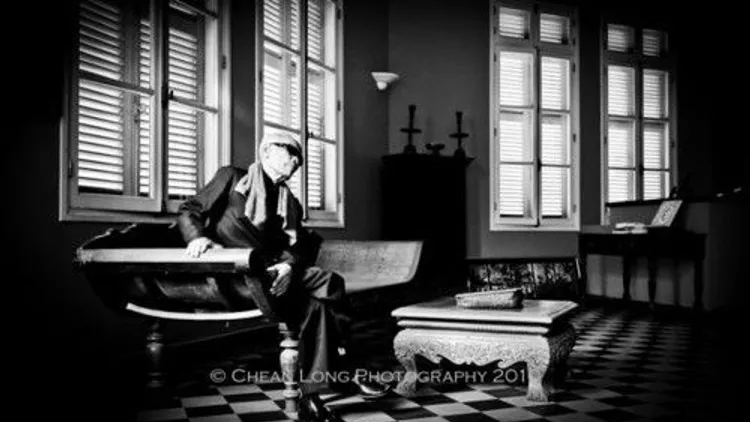Spectacle of arts
Twelve-year old Joy Rithy trotted barefoot for more than two kilometers from his Andong Jeng village to hear what the commotion was at the Phare Ponleu Selapak campus in Battambang. When he arrived at the sprawling arts complex, Rithy was awed by the spectacle before him.
"There is so much energy and excitement here," he said. "I did not expect to see so many students and so much Khmer art all in one place."
According to Phany Tum, 34, Country Manager of Cambodian Living Arts, the focus of Mohaosrop was "learning and sharing."
"At the opening day procession on August 24, students were on the edge of their seats as the thunder roared in the background," said Tum, an expatriate Khmer from Providence, Rhode Island. "Already, I could anticipate what awaited the students and masters. The event will be special."
There were four workshop sessions in 12 different art forms. The classes included traditional Khmer and Western arts, and ranged through wedding music, ritualistic funeral chanting known as smot, painting, street circus, Bassac opera, chapey dong veng or long-necked guitar, and even salsa dancing.
"These workshops were inspirational to participate in and observe," said *!#@on Verey, 31, who represented FEDA, a youth-centered organization that provides educational opportunities to rural residents.
"If you go on any bus trip in Cambodia, every kid sings. There is music in every child. And during the music workshop, young students were taking notes and asking question after question of the masters."
Sor Touch, 23, a Phare student in painting, echoes similar sentiments. "I attended the Bassac Theater workshop with very little knowledge of this traditional art. I came out of Master Norng Chock's workshop understanding the relationship between the placement of music and dance movements."
According to the Mohaosrop program booklet, Bassac Theater is a traditional Khmer form of theater that uses song and is among the most popular of all Cambodian theater forms. It is strongly influenced by Hy (Chinese Opera) and Kai Loeung (Vietnamese theater), which is evident in its scenery, costumes and makeup and also in the extremely physical and almost acrobatic acting techniques.
Besides the educational component of Mohaosrop, the seven-day program offered a rare opportunity for rural villagers to enjoy performances of many Khmer art forms. One crowd favorite was the Phare street circus and sbaek thom, a form of shadow puppetry that means, "large skin."
Ben Sokchea, 13, of Phnom Penh, was dazzled by Wat Bo's shadow theater troupe.
"My eyes lit up from the burning fire behind the cloth stage," Sokchea said. "I was mesmerized by the detailed puppet pieces, rhythmic body movements and story of warfare."
The collective energy of the participants did not dissipate, and often lasted until the early hours. At the closing finale, students, masters and international guests performed non-stop.
According to event organizers, the objective of Mohaosrop 2006 was to create lasting memories for the participants, revive traditional Cambodian art forms and inspire contemporary artistic expression.
"If the arts die, so will the nation; today, it gives me strong hope that our beloved Cambodia has been reborn," said Kum Sinath, 63, of Siem Reap.
